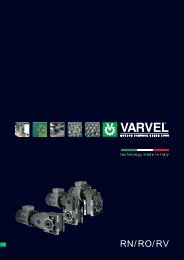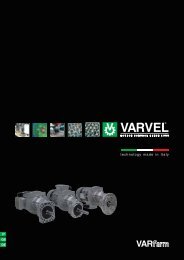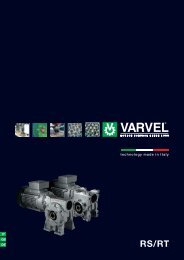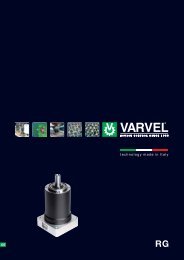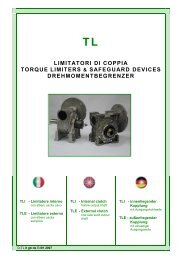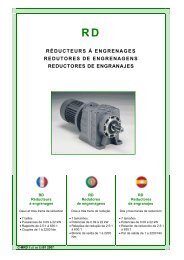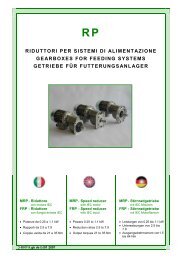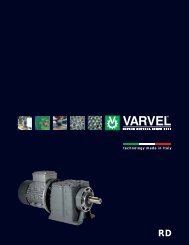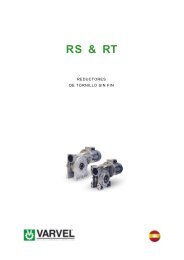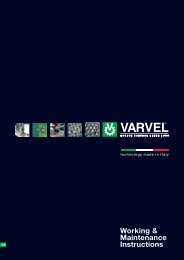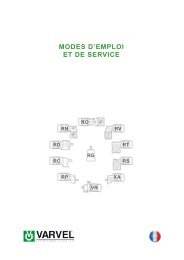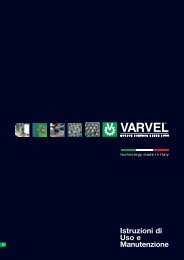Gearboxes Series RS & RT - Varvel
Gearboxes Series RS & RT - Varvel
Gearboxes Series RS & RT - Varvel
You also want an ePaper? Increase the reach of your titles
YUMPU automatically turns print PDFs into web optimized ePapers that Google loves.
<strong>Gearboxes</strong> <strong>Series</strong> <strong>RS</strong> & <strong>RT</strong><br />
Back-Driving and Self-Locking<br />
When back-driving a worm gear set using the worm wheel as input, the efficiency is lower than forwarddriving<br />
and, by varying the design data, back-drive efficiency can be reduced to zero obtaining a self-locking,<br />
or irreversible, gear set.<br />
When back-driving the worm gear, internal friction tends to lock the mesh, and the bigger the applied torque<br />
is, the more mesh friction increases proportionally augmenting the lockage at the same time.<br />
The most obvious example is during braking or slowing-down where the inertial load will try to back-drive<br />
the worm shaft.<br />
A worm gear is intended as a self-locking unit when the lead angle is less than the friction angle (arc tangent<br />
of friction coefficient).<br />
Tooth contact is dynamic even when the mesh velocity is zero, as vibrations in a non-rotating gear set can<br />
induce motion in the tooth contact.<br />
To provide a safety factor, a 3° lead angle is recommended for full self-locking condi-tion, and 10° lead angle<br />
for poor self-lock-ing condition, according to the table of relations between lead angles and self-locking.<br />
Lead angle<br />
Static self-locking<br />
20°<br />
Full back-driving<br />
10°20°<br />
High back-driving<br />
5°10°<br />
3°5°<br />
Good back-driving<br />
Poor self-locking<br />
Poor back-driving<br />
Good self-locking<br />
1°3°<br />
Full self-locking<br />
- 53 -



